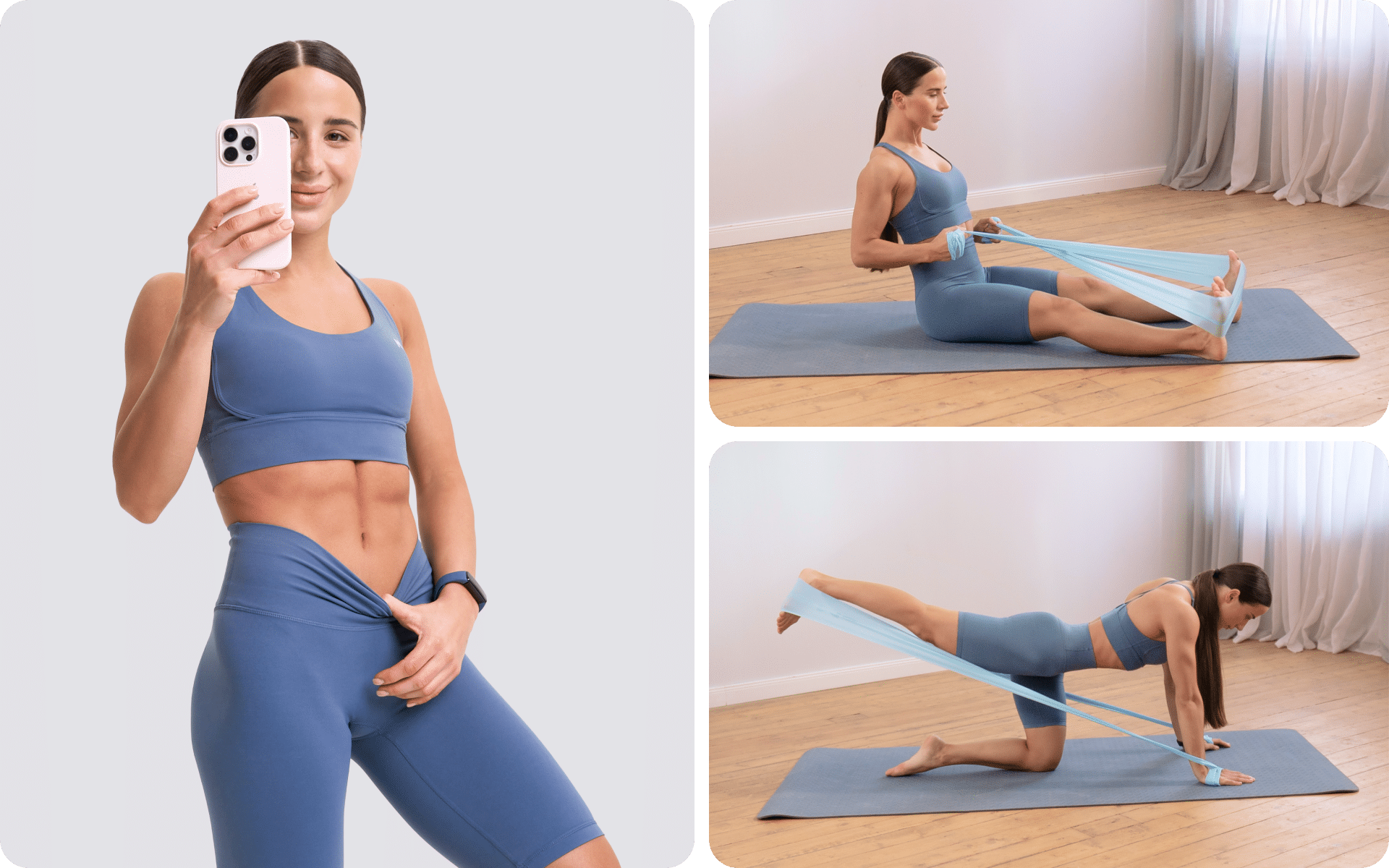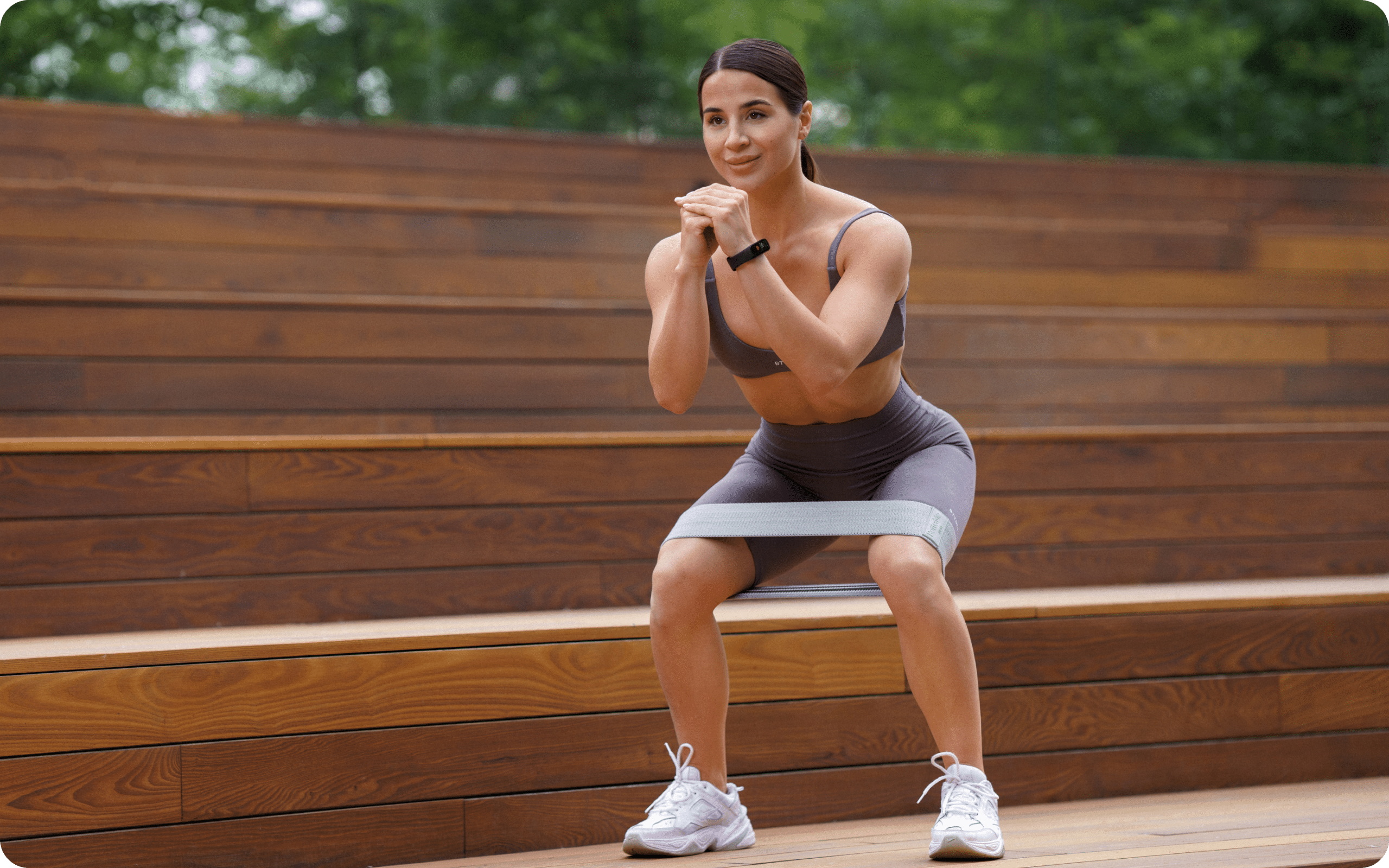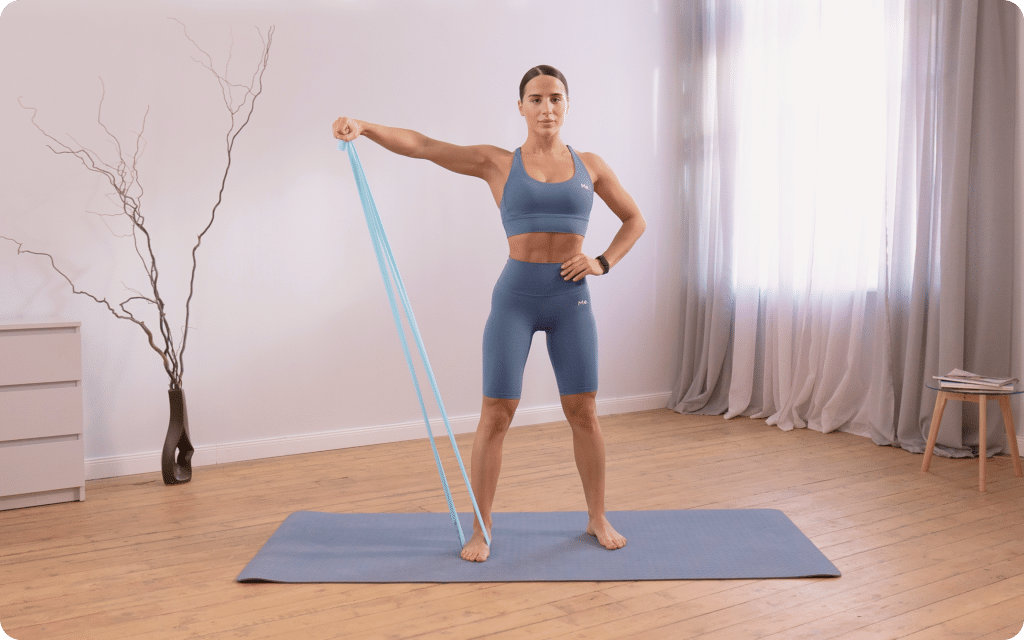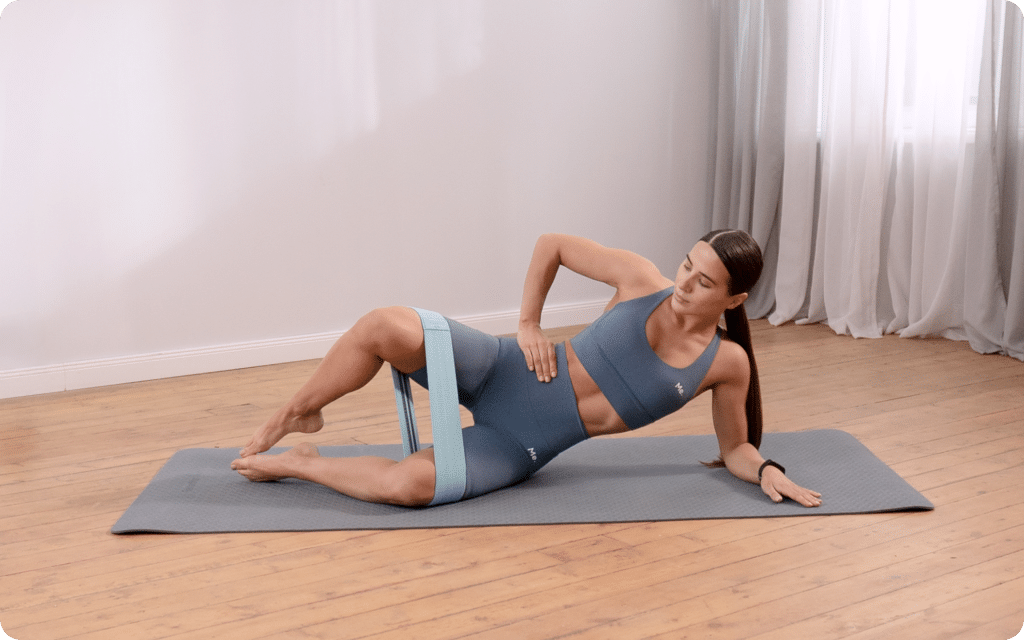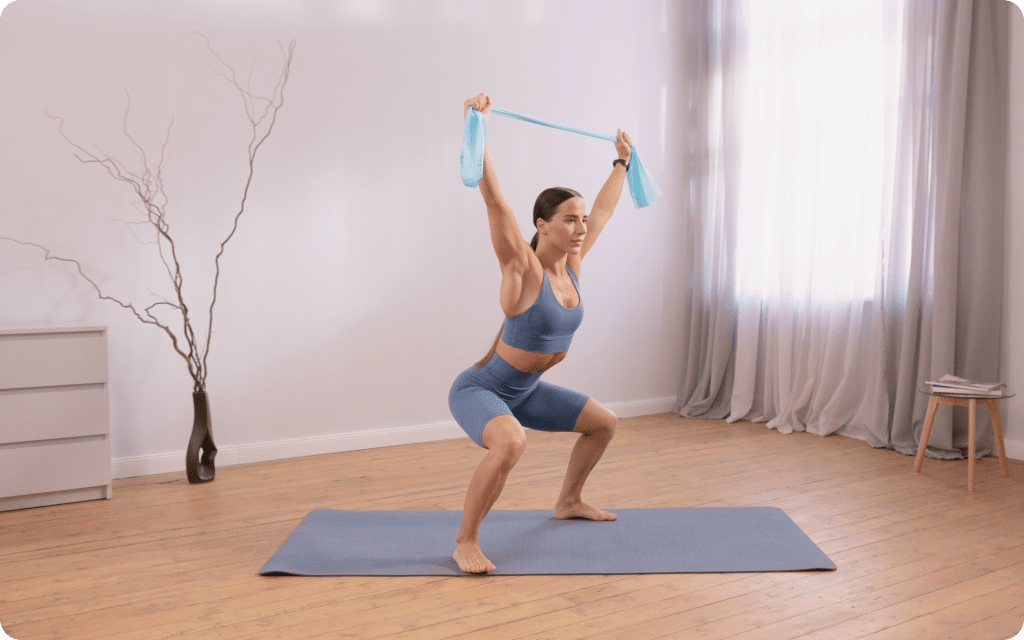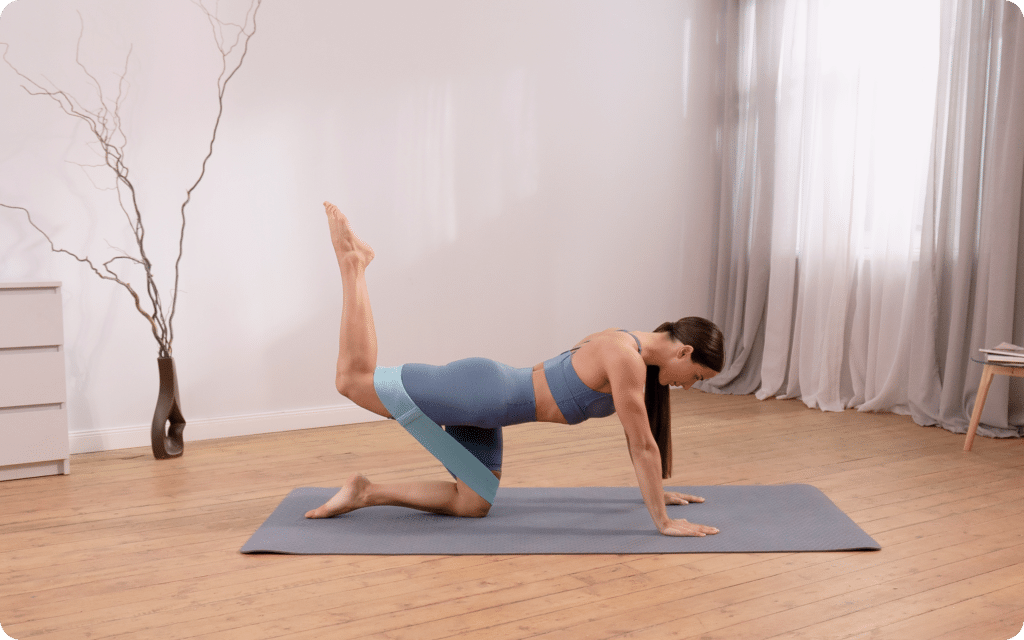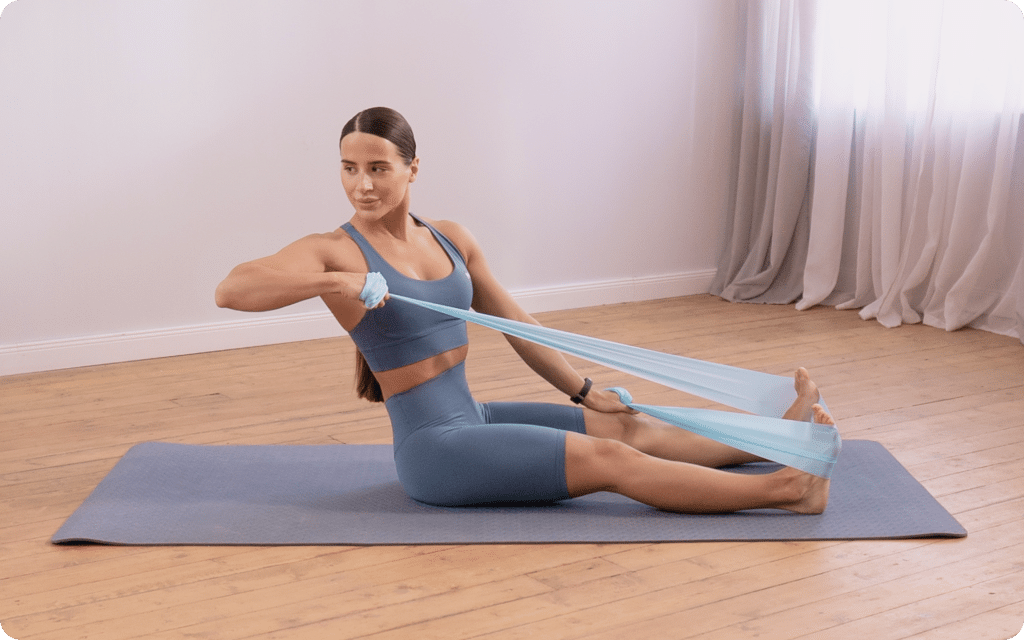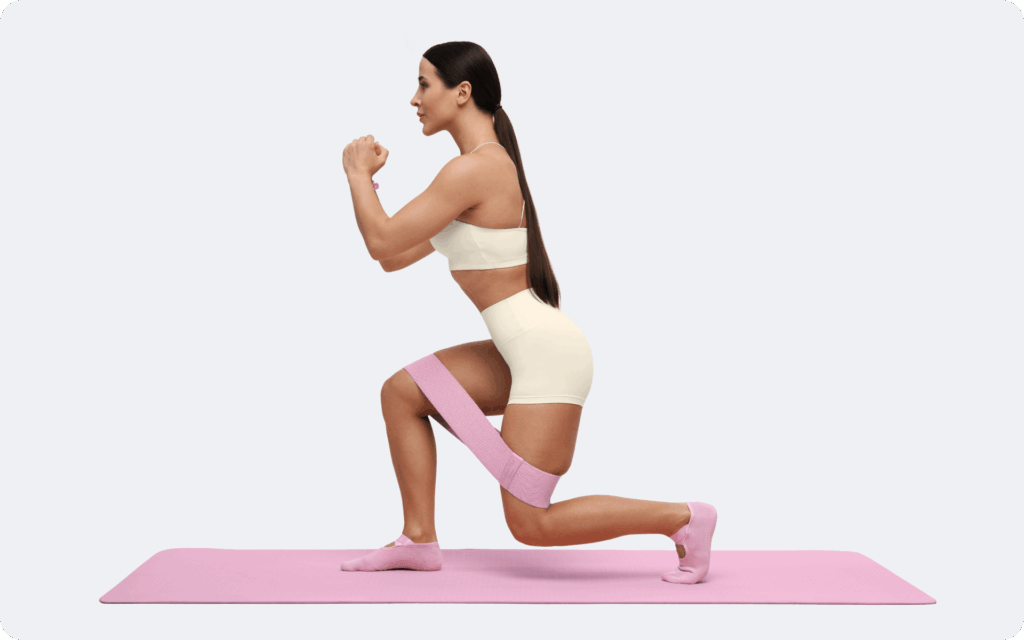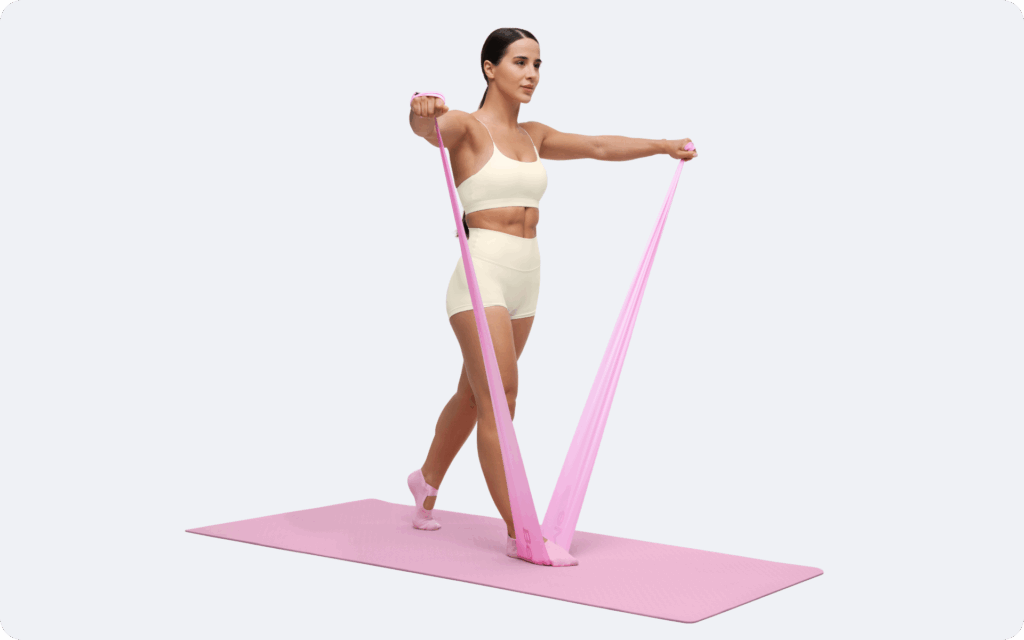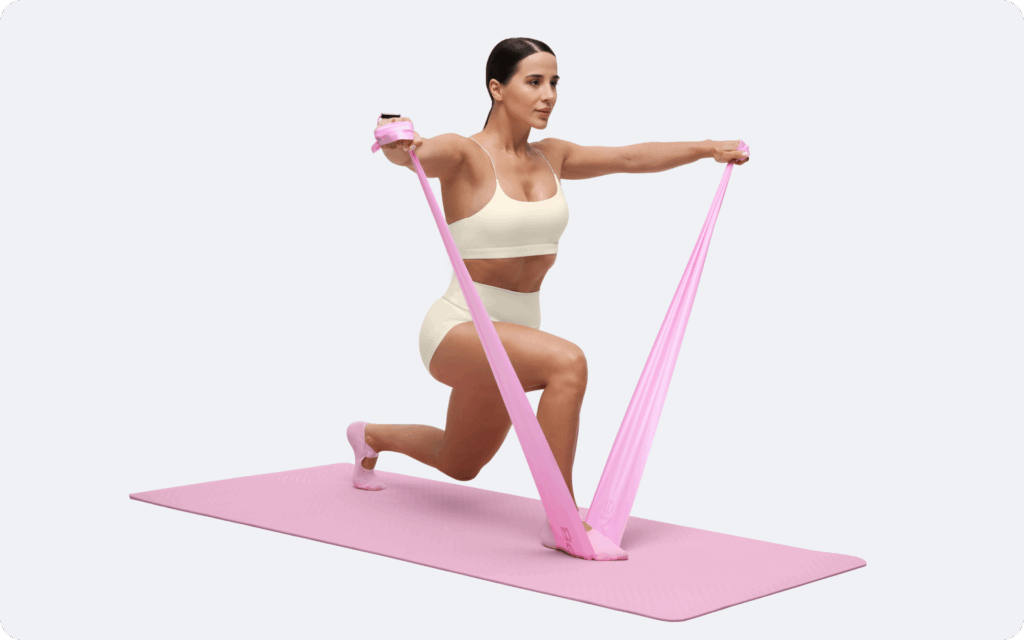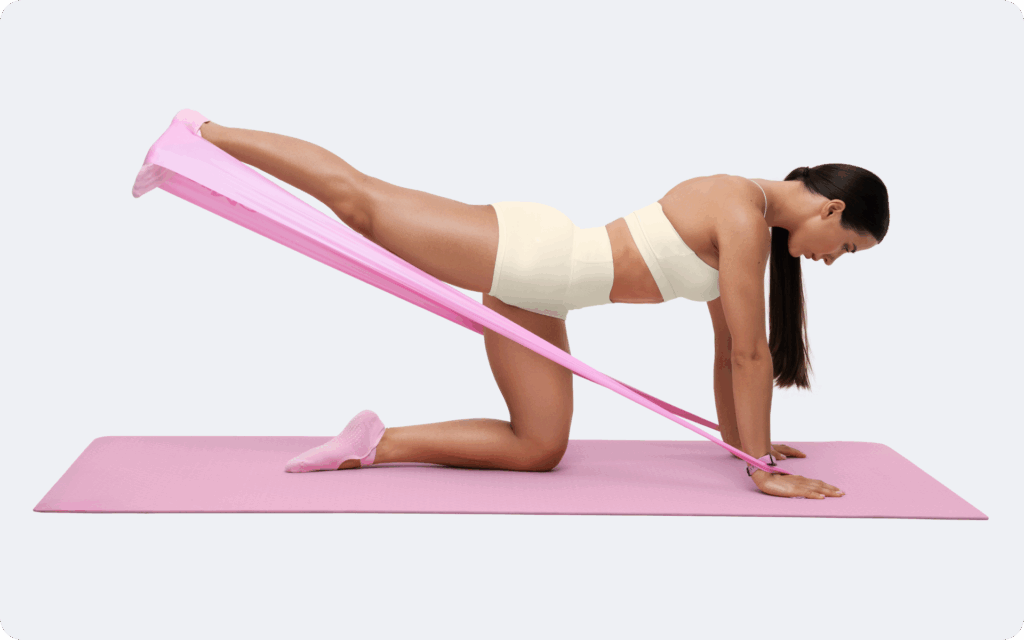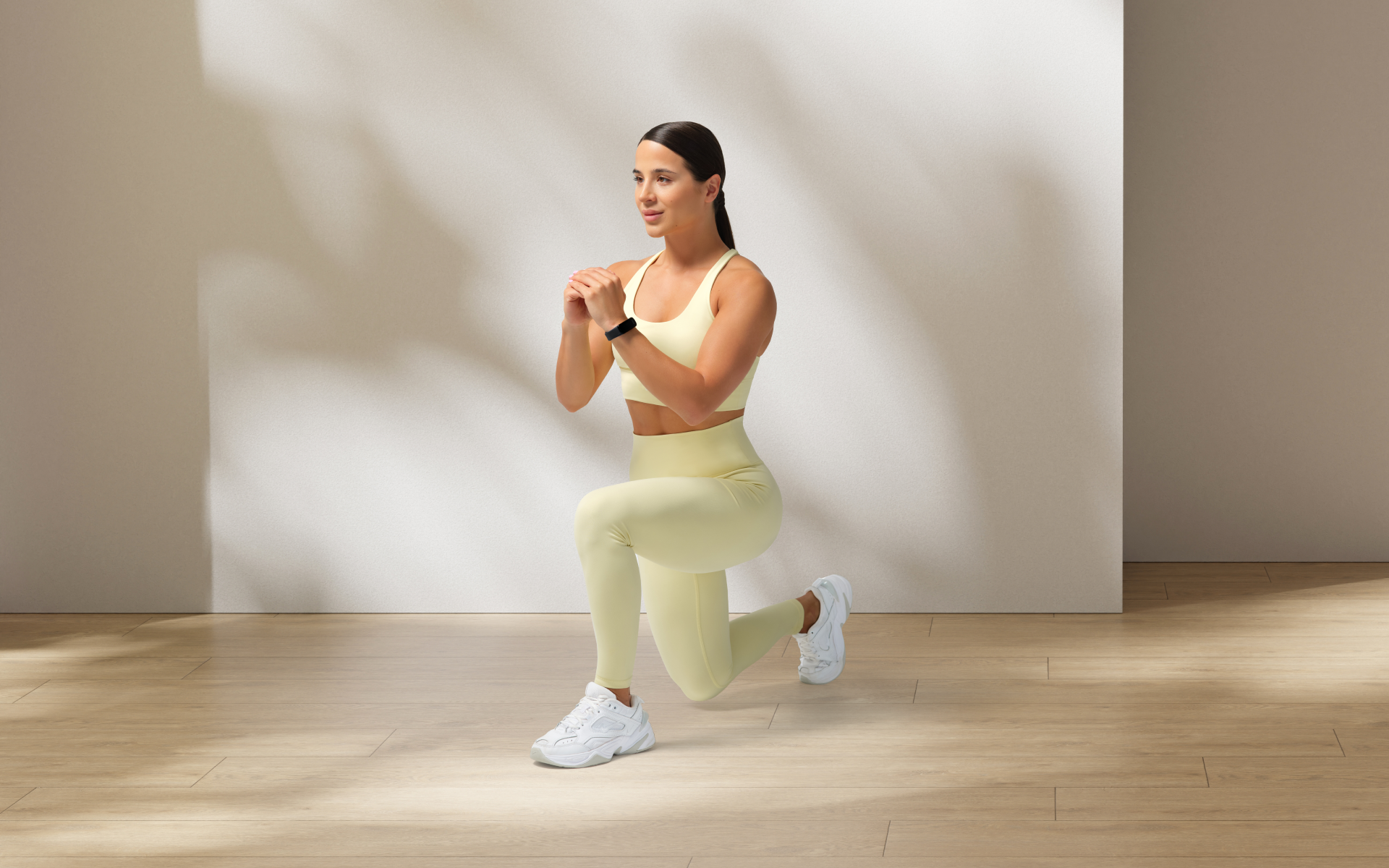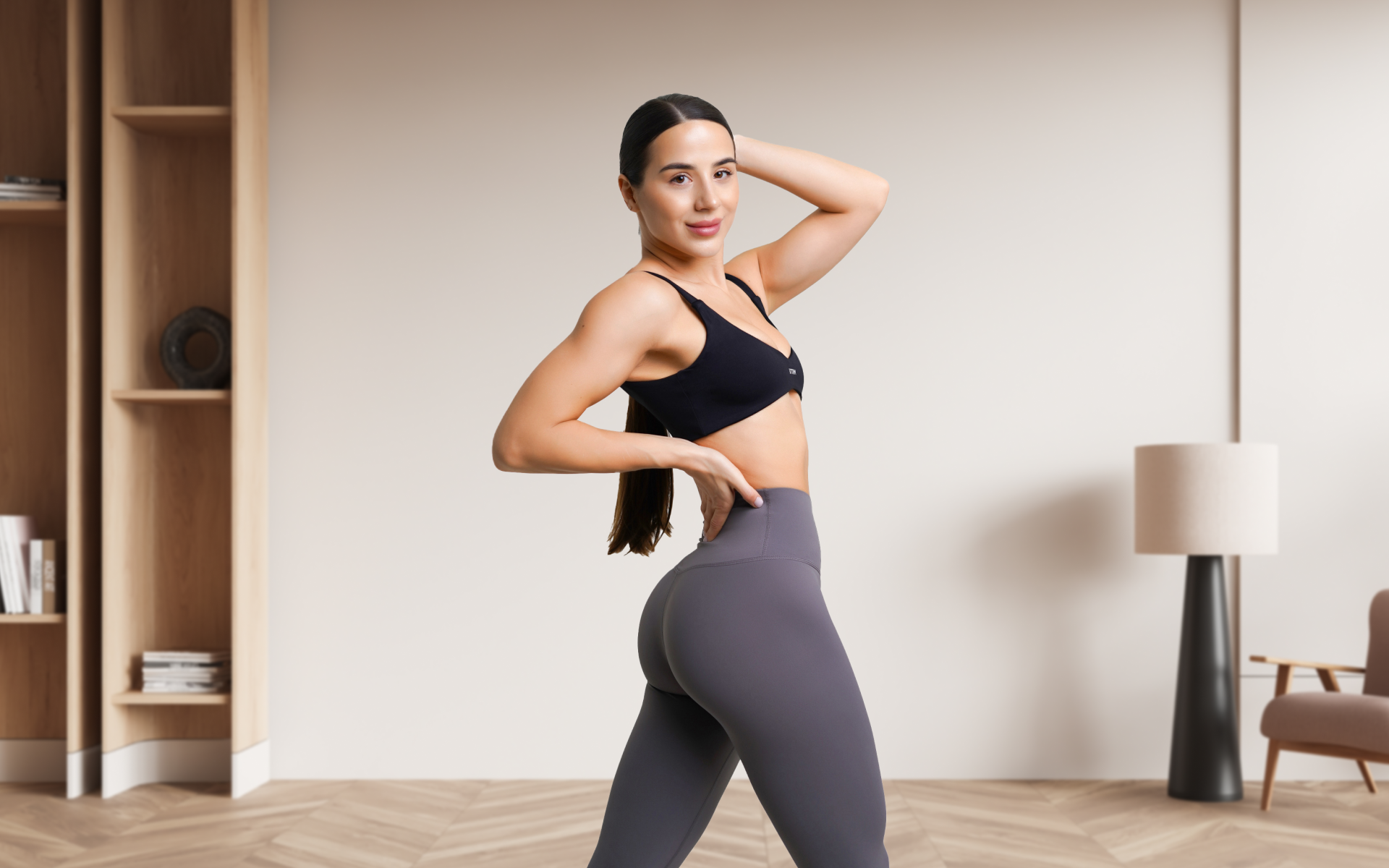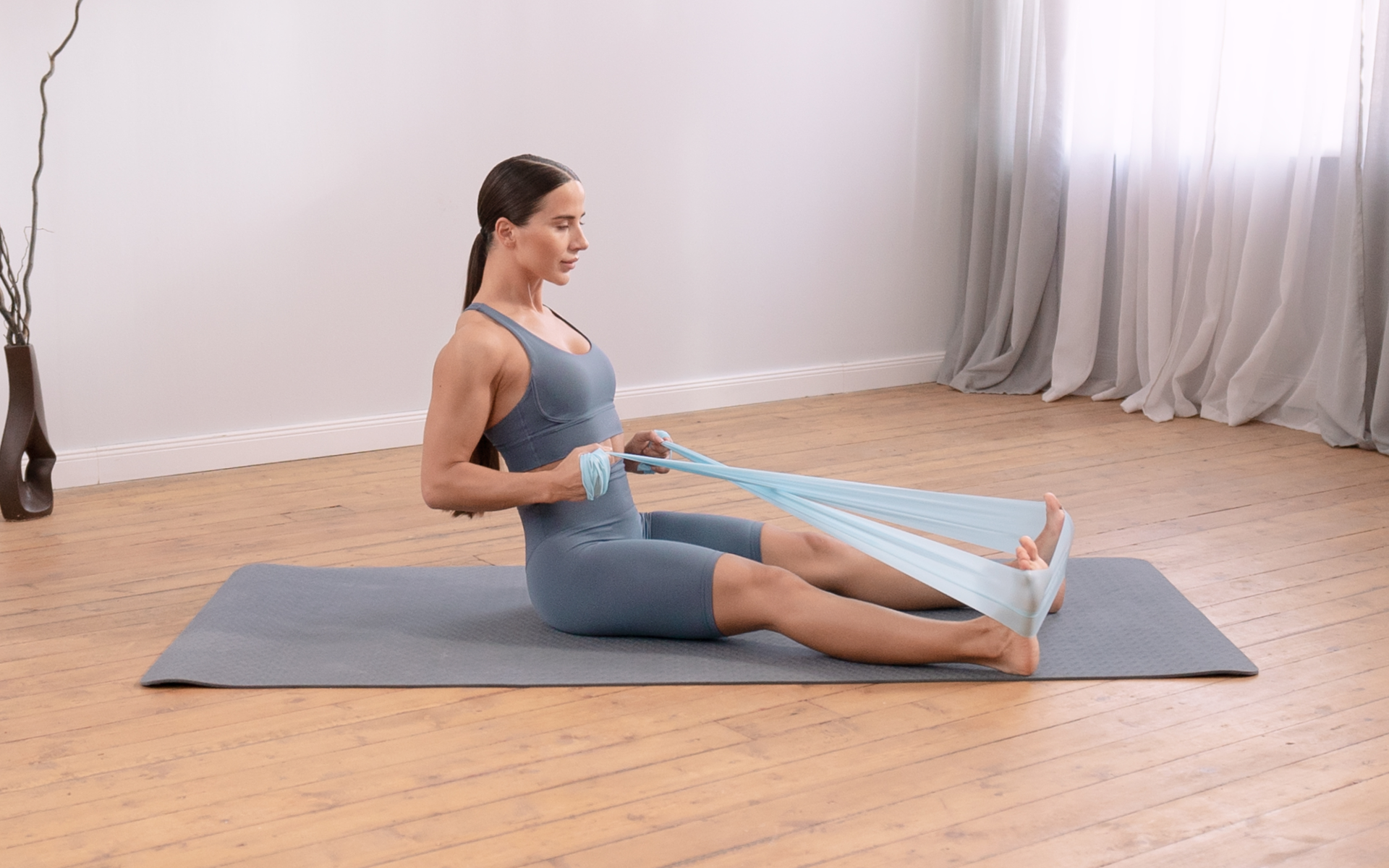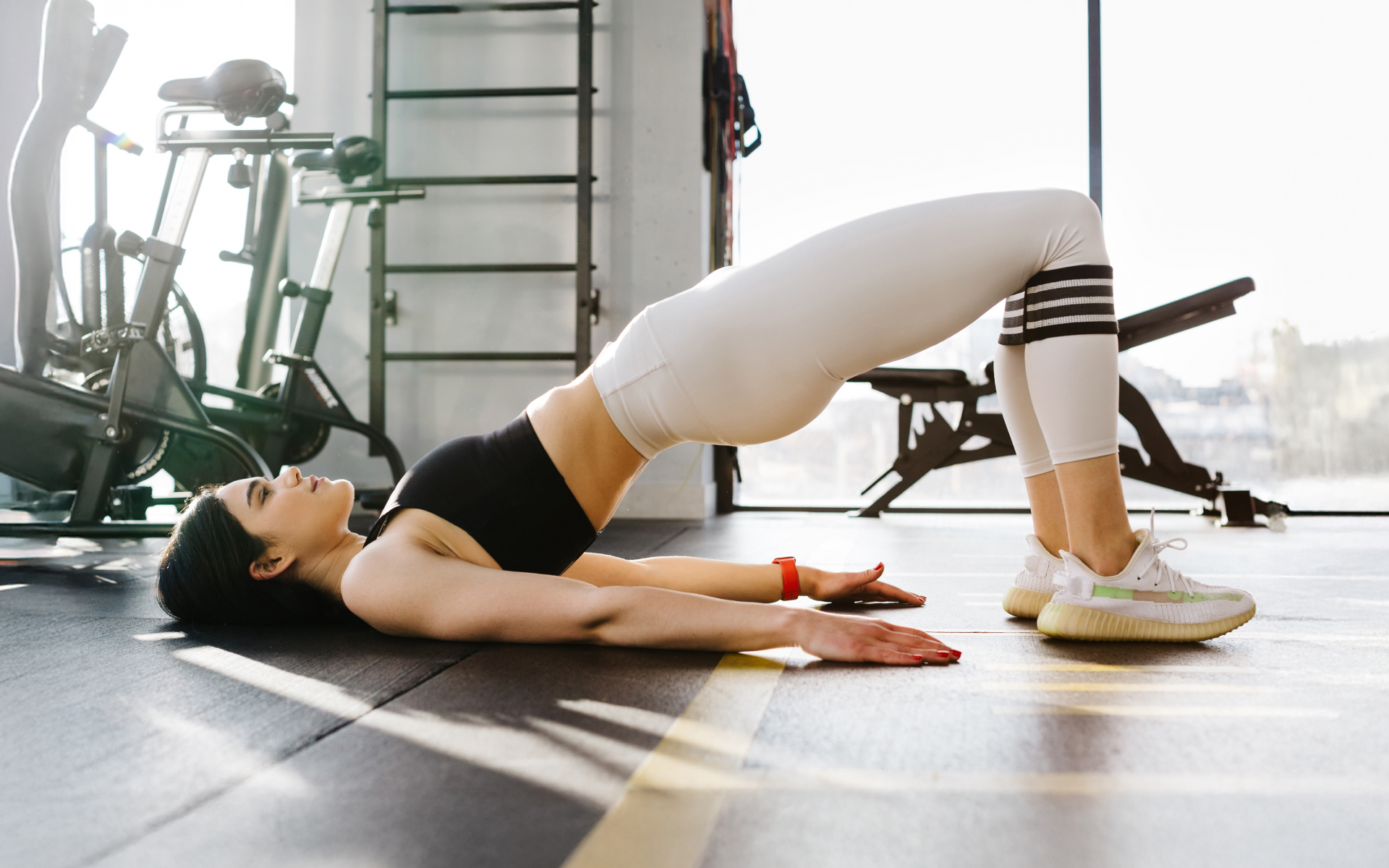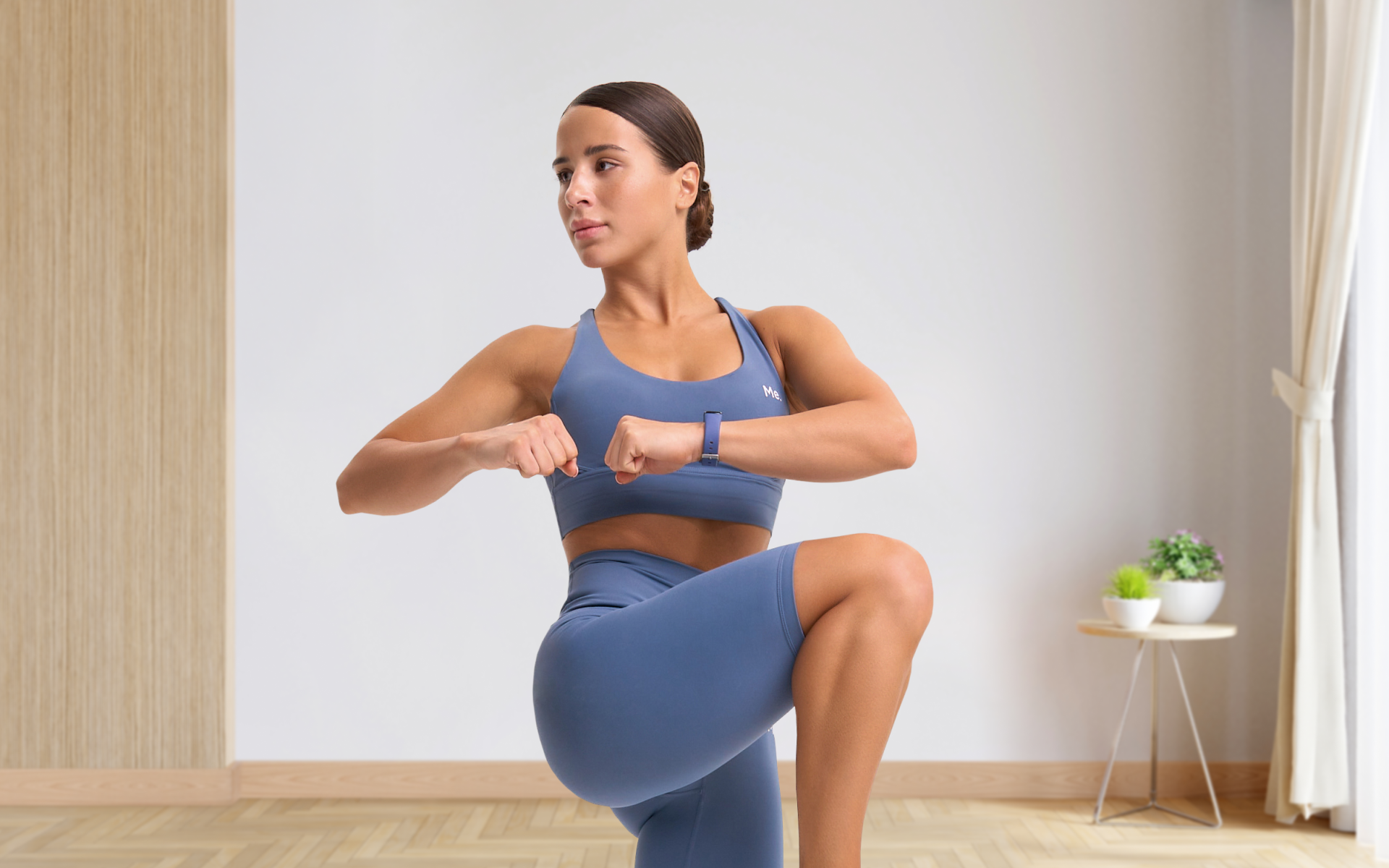Calisthenics has evolved far beyond simple push-ups and pull-ups. While purists may argue for bodyweight-only training, the strategic integration of resistance bands creates a powerful hybrid approach that accelerates progress and unlocks new movement possibilities.
The question isn’t whether you should add equipment to your training, it’s whether you’re ready to maximize your potential.
And the truth is, unless you’re a highly advanced athlete, using resistance bands can significantly enhance your calisthenics training. Simply adding the challenge of resistance can help you break through plateaus, build more muscle and strength, and improve your overall performance.
Even advanced athletes strategically use resistance bands to address specific concerns. For example, a mobility-focused resistance band routine can help improve joint health and range of motion, while a power-focused routine can target explosive movements and increase speed and agility.
These versatile tools clearly have a lot to offer for calisthenics enthusiasts of all levels. So, how can you use calisthenics resistance bands to amplify your bodyweight workout routine?
Let’s get into it.
Are Resistance Bands Good for Calisthenics?
Resistance bands serve as force multipliers in calisthenics training. Unlike traditional weights that provide constant resistance, bands create variable tension that mirrors natural strength curves.
This variable resistance perfectly complements bodyweight movements. For example, during a banded push-up resistance peaks at the top position where your triceps and chest are strongest. This matches your body’s natural leverage patterns.
Bands excel at providing assistance during skill development. Learning a muscle-up becomes manageable when bands ease the effort by a significant margin. They also add resistance to movements that become too easy, which extends the progression ladder indefinitely (1).
The portability factor cannot be ignored. A complete resistance band set weighs less than five pounds yet provides hundreds of pounds of potential resistance. This makes consistent training possible regardless of location or circumstances.
For those who are looking for the best calisthenics equipment, resistance bands represent exceptional value and versatility.
Read more: How To Start A Beginner Calisthenics Routine (And Stick To It)
Can You Actually Build Muscle with Resistance Bands?
Recent research has shattered the myth that only heavy weights build muscle. Studies comparing band training to traditional weightlifting have shown there to be nearly identical muscle growth when volume and intensity are matched (2, 3).
Muscle hypertrophy requires three key stimuli: mechanical tension, metabolic stress, and muscle damage. Resistance bands deliver all three effectively.
Mechanical tension occurs when muscles contract against resistance (4). Bands provide this throughout the entire range of motion, often exceeding what bodyweight alone can offer (5).
Reasons why BetterMe is a safe bet: a wide range of calorie-blasting workouts, finger-licking recipes, 24/7 support, challenges that’ll keep you on your best game, and that just scratches the surface! Start using our app and watch the magic happen.
The constant tension from bands creates this environment perfectly, which leads to the muscle-building “pump” that signals growth (2, 6).
Progressive overload drives muscle growth (7). Bands enable this through thickness variations, pre-stretching, combining multiple bands, and adjusting body positions (8). A simple push-up then becomes infinitely scalable.
The eccentric (lowering) phase of movements contributes significantly to muscle growth (9). Bands maintain tension during both concentric and eccentric phases, which maximizes the growth stimulus (2, 6).
Who needs weights when you have BetterMe’s Long Resistance Bands? They’re the magicians of your workout bag, sticking with you through every squat, pull, and lift. Get your grip on the all-in-one solution for a Better You!
Can You Get a Full Workout with Resistance Bands?
Absolutely. Bands can target every major muscle group through multiple movement patterns:
Upper-Body Push:
- Banded push-up variations
- Overhead presses
- Chest flies
- Tricep extensions
Upper-Body Pull:
- Band pull-aparts
- Face pulls
- Lat pulldowns
- Bicep curls
- Rowing movements
Lower Body:
- Squats with band resistance
- Lateral walks
- Glute bridges
- Leg curls
- Calf raises
Core and Stability:
- Pallof presses
- Wood chops
- Band-resisted planks
- Anti-rotation holds
Full-Body Integration:
- Thrusters
- Burpees with bands
- Mountain climbers
- Bear crawls with resistance
Understanding how to manipulate band tension, angles, and positions can create appropriate stimulus for each muscle group.
Creating an appropriate stimulus with resistance bands means ensuring your muscles are challenged effectively to promote strength, endurance, or hypertrophy (muscle growth), depending on your fitness goals.
1. Understanding Band Tension
Progressive Resistance: Resistance bands provide variable resistance, which means the tension increases as the band stretches (6). This allows for a unique challenge where the hardest part of the movement is at the peak contraction (e.g. the top of a bicep curl).
Adjusting Tension: You can manipulate the difficulty by:
- Using bands with different resistance levels (light, medium, or heavy).
- Adjusting the length of the band (shorter band = more tension).
2. Manipulating Angles
The angle of resistance determines which muscles are activated and how intensely they are worked (10). For example:
- Horizontal Pulls: Band pull-aparts target the rear delts and upper back.
- Vertical Pulls: Lat pulldowns emphasize the lats and upper back.
- Diagonal Movements: Wood chops or Pallof presses engage the core in rotational or anti-rotational patterns.
Experimenting with different angles ensures a well-rounded workout and prevents overworking certain muscle groups while neglecting others.
3. Positioning and Anchor Points
Where you anchor the band (e.g. door, pole, or under your feet) changes the direction of resistance and the muscles that are being targeted (11).
For example:
- Anchoring a band low for overhead presses mimics the upward push of a barbell.
- Anchoring it high for rows simulates pulling a cable machine.
4. Range of Motion
Bands allow for a full range of motion, which is essential for muscle activation and joint health (5). Ensure you’re moving through the entire range of the exercise (e.g. fully extending and contracting during a bicep curl) in order to maximize muscle engagement.
5. Time Under Tension
Slowing down the movement increases the time your muscles are under tension, which can enhance strength and hypertrophy (4).
For example:
- Perform a squat with a 3-second descent, a 1-second pause at the bottom, and a controlled ascent.
- This method can make even lighter resistance bands feel more challenging.
6. Combining Movements
Full-body integration exercises (e.g. thrusters or bear crawls with bands) create a compound stimulus, engaging multiple muscle groups and increasing calorie burn. These movements also improve coordination, balance, and functional strength (12).
7. Progression and Overload
To continue building strength, you need to progressively overload your muscles (8). With bands, this can be achieved by:
- Increasing band resistance.
- Adding more repetitions or sets.
- Reducing rest time between sets.
8. Mind-Muscle Connection
Focus on the muscle you’re targeting during each movement. A study on men performing a bench press found that this ensures proper form and maximizes activation (13). For example, during a glute bridge with a band, concentrate on squeezing your glutes at the top of the movement rather than allowing your lower back to take over.
By understanding and applying these principles, you can create a workout with resistance bands that is equally as effective as one with free weights or machines.
Those who are interested in comprehensive calisthenics equipment for home use will find that resistance bands integrate seamlessly with other tools.
What Is an Explosive Calisthenics Resistance Bands Workout?
Here’s a complete full-body program that is designed to build strength, power, and conditioning:
Workout Structure:
- Perform 3 rounds
- Rest for 45-60 seconds between exercises
- Rest for 2-3 minutes between rounds
- Train 3 times per week with rest days
Banded Jump Squats
Sets: 3 Reps: 8-12 Rest: 45 seconds
This exercise develops explosive lower-body power while the band provides accommodating resistance.
Position the band under your feet, holding the handles at shoulder height. Descend into a squat position with control. Explode upward into a jump while extending your arms overhead. Land softly and immediately transition into the next repetition. The band resistance increases as you extend, matching your power output curve.
Band-Assisted Muscle-Ups
Sets: 3 Reps: 3-6 Rest: 60 seconds
Muscle-ups represent the pinnacle of upper-body coordination and strength.
Attach a heavy band to the pull-up bar. Step into the band with one or both feet, depending on the assistance needed. Start with an explosive pull-up, transitioning aggressively over the bar. The band provides assistance during the weakest portion of the movement while allowing you to develop proper movement patterns.
Banded Push-Up to T-Rotation
Sets: 3 Reps: 6-10 each side Rest: 45 seconds
This combines horizontal pushing with rotational stability and core engagement.
Perform a push-up with the band around your back. At the top position, rotate your torso and extend one arm toward the ceiling, creating a T-shape. The band provides resistance during the push-up while challenging core stability during the rotation. This movement builds functional strength patterns.
Band-Resisted Burpees
Sets: 3 Reps: 8-15 Rest: 60 seconds
Burpees become exponentially more challenging with band resistance.
Place the band around your back during the push-up portion. The added resistance transforms a conditioning movement into a strength exercise. Focus on maintaining form as fatigue accumulates. This exercise builds both muscular endurance and cardiovascular capacity.
Single-Leg Glute Bridge with Band
Sets: 3 Reps: 10-15 each leg Rest: 45 seconds
Posterior chain strength often limits calisthenics performance, which makes this exercise crucial.
Place the band across your hips and anchor the ends under your shoulders. Perform single-leg glute bridges with the non-working leg extended. The band resistance peaks at full hip extension, maximally activating the glutes and hamstrings. This builds the posterior strength that is necessary for advanced movements.
For those who are looking for a complete resistance bands full body workout, this routine provides the foundation for ongoing progression.
Are Resistance Bands Just as Good as Lifting Weights?
Both tools have unique benefits and limitations, and their effectiveness is dependent on how they are used in a training program. Each training method offers distinct advantages:
Resistance Bands Advantages:
- Variable resistance matching strength curves: Resistance increases as the band stretches, aligning with the natural strength curve of muscles for more effective training.
- Enhanced eccentric control: Bands provide consistent tension during the lowering phase of movements, which improves control and muscle engagement.
- Improved joint stability through multi-planar resistance: Bands allow resistance in multiple directions, which helps strengthen stabilizing muscles and improve joint health.
- Superior portability and convenience: Lightweight and compact, bands are easy to carry and use anywhere, which makes them ideal for travel or home workouts.
- Lower injury risk due to accommodating resistance: Bands adjust resistance based on effort, which reduces the strain on joints and lowers injury risk.
- Seamless integration with bodyweight movements: Bands can enhance bodyweight exercises by adding resistance without the need for heavy equipment.
BetterMe: Health Coaching app helps you achieve your body goals with ease and efficiency by helping to choose proper meal plans and effective workouts. Start using our app and you will see good results in a short time.
Weight Training Advantages:
- Precise load quantification and progression: Weights allow you to measure and increase resistance in exact increments, ensuring consistent progress.
- Maximum strength development potential: Lifting heavy weights is the most effective way to build maximum strength and power.
- Established periodization protocols: Weight training follows proven methods for structuring workouts to optimize performance and recovery.
- Greater muscle mass building capacity: Heavier loads stimulate muscle growth more effectively than lighter resistance.
- Superior bone density improvements: Weight-bearing exercises with heavy loads strengthen bones and reduce the risk of osteoporosis.
- More effective for powerlifting-specific adaptations: Weight training is essential for developing the strength and technique that are required for powerlifting competitions.
Movement Quality:
Bands provide variable resistance, which means the resistance increases as the band stretches.
This can help maintain tension throughout the entire range of motion, which is particularly useful for exercises such as squats, presses, or rows. This characteristic can promote better movement patterns by encouraging consistent muscle engagement.
With free weights, resistance is influenced by gravity. This means that the resistance may feel less challenging in certain parts of a movement (e.g. at the top of a bicep curl or the bottom of a squat). These “dead spots” occur as the direction of resistance (gravity) doesn’t always align with the muscle’s line of pull.
However, free weights can still be highly effective for building strength and improving movement patterns.
Specificity:
For general fitness and functional movement, bands excel. For maximum strength sports, weights have proven to be superior.
Resistance bands and weights are not mutually exclusive. They can complement each other in a training program.
Read more: Beginner’s Guide to Calisthenics: Build Strength with Just Your Body
What Are the Disadvantages of Resistance Bands?
Understanding limitations ensures realistic expectations and proper application.
- Progressive Overload Challenges:
Unlike adding plates to a barbell, quantifying band resistance proves difficult. Thickness, stretch distance, and quality all affect resistance levels. This makes precise programming challenging.
- Durability Concerns:
Bands eventually break, often without warning. High-quality bands last longer but represent ongoing replacement costs. You should always inspect bands before use and maintain backups.
- Limited Maximum Resistance:
Even the strongest bands cannot match the resistance potential of loaded barbells. Advanced athletes may outgrow band resistance for certain movements.
- Inconsistent Resistance Curves:
While variable resistance benefits most movements, some exercises require constant load. While performing a deadlift, the load should remain constant to train the muscles evenly throughout the lift.
Bands cannot replicate the consistent resistance of weights. This can make them less effective for exercises where consistent load is necessary or for athletes who are training for specific strength adaptations.
- Setup Requirements:
Many band exercises require solid anchor points. This limits exercise selection in certain environments and requires additional hardware.
- Measurement Difficulties:
Tracking progress becomes subjective without precise load measurements. This can reduce motivation for data-driven individuals.
- Quality Variations:
Band quality varies dramatically between manufacturers. Cheap bands break quickly and provide inconsistent resistance, while quality bands require significant investment.
What Happens if I Use Resistance Bands Every Day?
Muscle growth occurs during rest periods, not training sessions (14). Daily high-intensity band work can impede recovery and limit progress. However, bands enable varied intensity levels that may allow daily use.
Smart Daily Programming:
Alternate between high-intensity strength days and low-intensity mobility/activation days. Use bands for movement preparation, corrective exercises, and light activation work on recovery days.
Intensity Distribution:
Follow the 80/20 rule: 80% of training at low to moderate intensity, 20% at high intensity. This allows daily training while preventing overreaching.
Movement Variety:
Rotate between different movement patterns and muscle groups. This prevents overuse injuries while maintaining training frequency.
Listen to Biofeedback:
Your body provides constant feedback about readiness to train. Decreased performance, elevated resting heart rate, or persistent fatigue are indicators of the need for rest.
Periodization Principles:
Periodization is the systematic planning of training cycles to optimize performance and recovery.
It involves varying the intensity, volume, and type of exercise over specific periods to prevent plateaus, reduce the risk of overtraining, and achieve peak performance at the right time.
Even with daily training, incorporate planned recovery weeks every 4-6 weeks. Reduce volume and intensity to allow supercompensation (the process where the body adapts to stress (training) by recovering and becoming stronger or more capable than before).
Joint Health:
Daily training places cumulative stress on joints. Include mobility work and pay attention to any developing discomfort.
Resistance bands can’t spot-reduce fat from specific areas. Fat loss requires a caloric deficit that can be achieved through diet and overall activity levels (15). However, bands excel at building muscle mass throughout the body, which increases metabolic rate and contributes to overall fat loss (16). High-intensity band circuits also provide cardiovascular benefits that can support your fat loss goals (17). Core development requires progressive overload and varied movement patterns, both of which are achievable with bands. Band exercises such as Pallof presses, wood chops, and anti-extension holds challenge core stability in ways traditional exercises cannot. Combined with reduced body fat levels through proper nutrition, band training can absolutely contribute to visible abdominal development. Recovery remains essential regardless of training equipment. While bands may cause less joint stress than heavy weights, muscles still require rest to adapt and grow stronger. The ideal frequency is dependent on your training intensity, volume, and individual recovery capacity. Most people will benefit from at least one complete rest day per week, although active recovery using light band work may be beneficial. Bands provide excellent glute development tools through exercises such as lateral walks, clamshells, and hip thrusts. The variable resistance perfectly matches glute activation patterns, providing peak tension at full hip extension where glutes are strongest. Many people find bands to be more effective than weights for glute activation due to the constant tension they provide throughout movement ranges.Frequently Asked Questions
Are resistance bands good for belly fat?
Can you get a six-pack with resistance bands?
Do you need rest days with resistance bands?
Can resistance bands grow glutes?
The Bottom Line
Resistance bands represent more than simple accessories – they bridge the gap between bodyweight limitations and strength development needs.
Integrating bands with calisthenics creates a hybrid approach that maximizes both convenience and effectiveness. This combination allows for continued progression long after basic bodyweight movements become manageable.
Success requires understanding how to manipulate resistance through band selection, positioning, and pre-stretching. Start with fundamental movements and progress gradually to more complex patterns.
Quality equipment is very important in band training. You should invest in durable bands made by reputable manufacturers to ensure safety and consistency.
The goal isn’t to replace traditional training methods but to expand your toolkit. Bands offer unique advantages that complement bodyweight training perfectly.
DISCLAIMER:
This article is intended for general informational purposes only and does not serve to address individual circumstances. It is not a substitute for professional advice or help and should not be relied on for making any kind of decision-making. Any action taken as a direct or indirect result of the information in this article is entirely at your own risk and is your sole responsibility.
BetterMe, its content staff, and its medical advisors accept no responsibility for inaccuracies, errors, misstatements, inconsistencies, or omissions and specifically disclaim any liability, loss or risk, personal, professional or otherwise, which may be incurred as a consequence, directly or indirectly, of the use and/or application of any content.
You should always seek the advice of your physician or other qualified health provider with any questions you may have regarding a medical condition or your specific situation. Never disregard professional medical advice or delay seeking it because of BetterMe content. If you suspect or think you may have a medical emergency, call your doctor.
SOURCES:
- Acute Effects of Elastic Bands as Resistance or Assistance on EMG, Kinetics, and Kinematics During Deadlift in Resistance-Trained Men (2020, frontiersin.org)
- Effect of Strength Training Program with Elastic Band on Strength Parameters (2015, researchgate.net)
- Effects of a Short-Term Resistance Program Using Elastic Bands Versus Weight Machines for Sedentary Middle-Aged Women (2008, journals.lww.com)
- Resistance Training Induces Improvements in Range of Motion: A Systematic Review and Meta-Analysis (2023, pmc.ncbi.nlm.nih.gov)
- Muscle time under tension during resistance exercise stimulates differential muscle protein sub-fractional synthetic responses in men (2011, pmc.ncbi.nlm.nih.gov)
- Elastic Bands as a Component of Periodized Resistance Training (2016, pubmed.ncbi.nlm.nih.gov)
- Complexity: A Novel Load Progression Strategy in Strength Training (2019, pmc.ncbi.nlm.nih.gov)
- Effects of Resistance Training Overload Progression Protocols on Strength and Muscle Mass (2024, pubmed.ncbi.nlm.nih.gov)
- Eccentric muscle contractions: from single muscle fibre to whole muscle mechanics (2023, link.springer.com)
- Muscle activation comparisons between elastic and isoinertial resistance: A meta-analysis (2016, sciencedirect.com)
- Acute Effects of Elastic Bands as Resistance or Assistance on EMG, Kinetics, and Kinematics During Deadlift in Resistance-Trained Men (2020, frontiersin.org)
- 5 Benefits of Compound Exercises (2016, acefitness.org)
- Importance of mind-muscle connection during progressive resistance training (2016, pubmed.ncbi.nlm.nih.gov)
- The Importance of Recovery in Resistance Training Microcycle Construction (2024, pmc.ncbi.nlm.nih.gov)
- Spot reduction: why targeting weight loss to a specific area is a myth (2023, sydney.edu.au)
- Increasing muscle mass to improve metabolism (2013, pmc.ncbi.nlm.nih.gov)
- Narrative Review of High-Intensity Interval Training: Positive Impacts on Cardiovascular Health and Disease Prevention (2025, mdpi.com)

